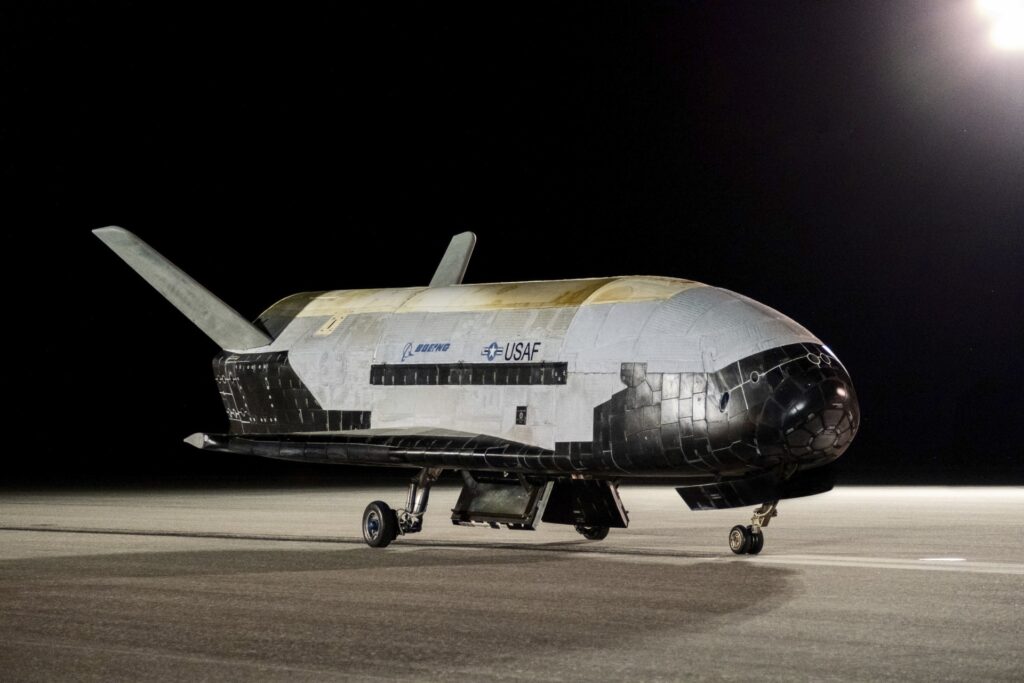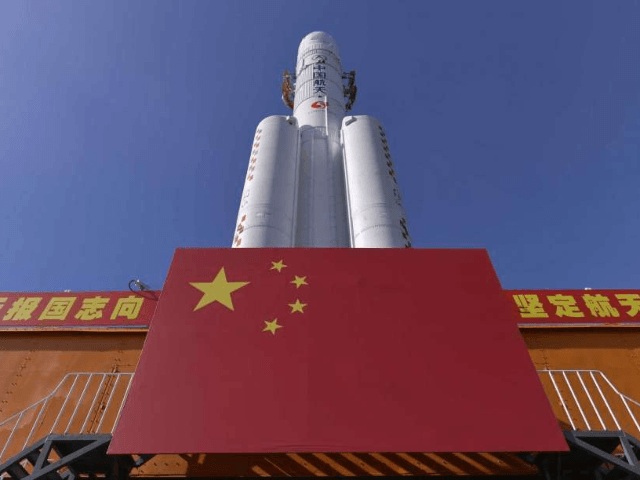Chinese state media on Monday announced that a “reusable experimental spacecraft” landed at the Jiuquan Satellite Launch Center on schedule, an alleged “milestone” in China’s effort to explore the “peaceful use of space.”
China’s Global Times described the 276-day orbital flight as the “longest, most complicated, and most challenging” test of a system that is rapidly approaching the capabilities of America’s reusable spaceplanes:
China launched a reusable experimental spacecraft using its Long March-2F carrier rocket from the Jiuquan Satellite Launch Center on August 5, 2022, to test reusable technologies and in-orbit service technologies to support the peaceful use of space, Xinhua previously reported.
China tested the reusable experimental spacecraft in September 2020, and the spacecraft returned to the planned landing site after two days in orbit. The spacecraft was also launched with a Long March-2F carrier rocket.
Chinese authorities have disclosed few details about the craft’s technology. So far, no images of the spacecraft or footage of its launch or landing have been disclosed.
This layer of secrecy prompted skeptics to doubt the craft returned to Earth as smoothly as China claimed or that it was “reusable” in any meaningful sense. This did not stop the Global Times from speculating that manned missions could be right around the corner.
“Given the payload launching capability of the Long March-2F, the spacecraft could weigh around 8 tons, which is very similar to the launch mass for the X-37B at around 5 tons, so that speculation about their similarity is not groundless,” the Global Times gushed, referring to the X-37B robotic orbiter designed by Boeing.

The Boeing-built X-37B Orbital Test Vehicle (OTV) is shown at NASA’s Kennedy Space Center in Florida on Saturday, November 12, 2022. (Boeing /U.S. Space Force via AP)
Boeing’s craft resembles a cross between a long-range atmospheric drone and the Space Shuttle and is about one-quarter the size of the venerable Space Shuttle design. The X-37B can de-orbit and land on its own after operating up to 500 miles above the Earth’s surface. The sixth test flight of the X-37B, concluded in November 2022, lasted for 908 days.
In November, the U.S. Space Force detected a smaller object detaching from the Chinese vehicle and following its orbit. China did not release any information about this second object, or about the mission parameters for the larger craft.

In this frame from video provided by SpaceX an unmanned Falcon rocket launches from Florida’s Kennedy Space Center, Thursday, September 7, 2017. It’s the fifth flight for one of these crewless mini shuttles, known as the X-37B Orbital Test Vehicle. (SpaceX via AP)
U.S. analysts speculated the smaller object could have been a support module, or a satellite intended to relay information about the purported space plane it was following. Some thought its release could be a signal that the spaceplane was preparing to de-orbit, but as it turned out, that did not happen until last week.
The Drive concluded that China’s report of a smooth and successful spaceplane landing at the Jiuquan Satellite Launch Center was almost certainly false since that facility conducts launches but does not boast a runway long enough to handle landings. Some other airfields in northwestern China do have runways of sufficient length.
“No details were provided about the design of the spacecraft itself or the particular technologies it was testing, and no photographs were released. It has not been revealed what orbital profile it flew, and whether any particular payloads were aboard for this mission,” The Drive noted.
https://www.thedrive.com/the-war-zone/chinese-spaceplane-returns-to-earth-after-longest-flight-so-far

COMMENTS
Please let us know if you're having issues with commenting.